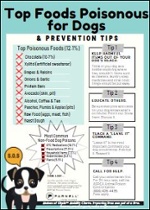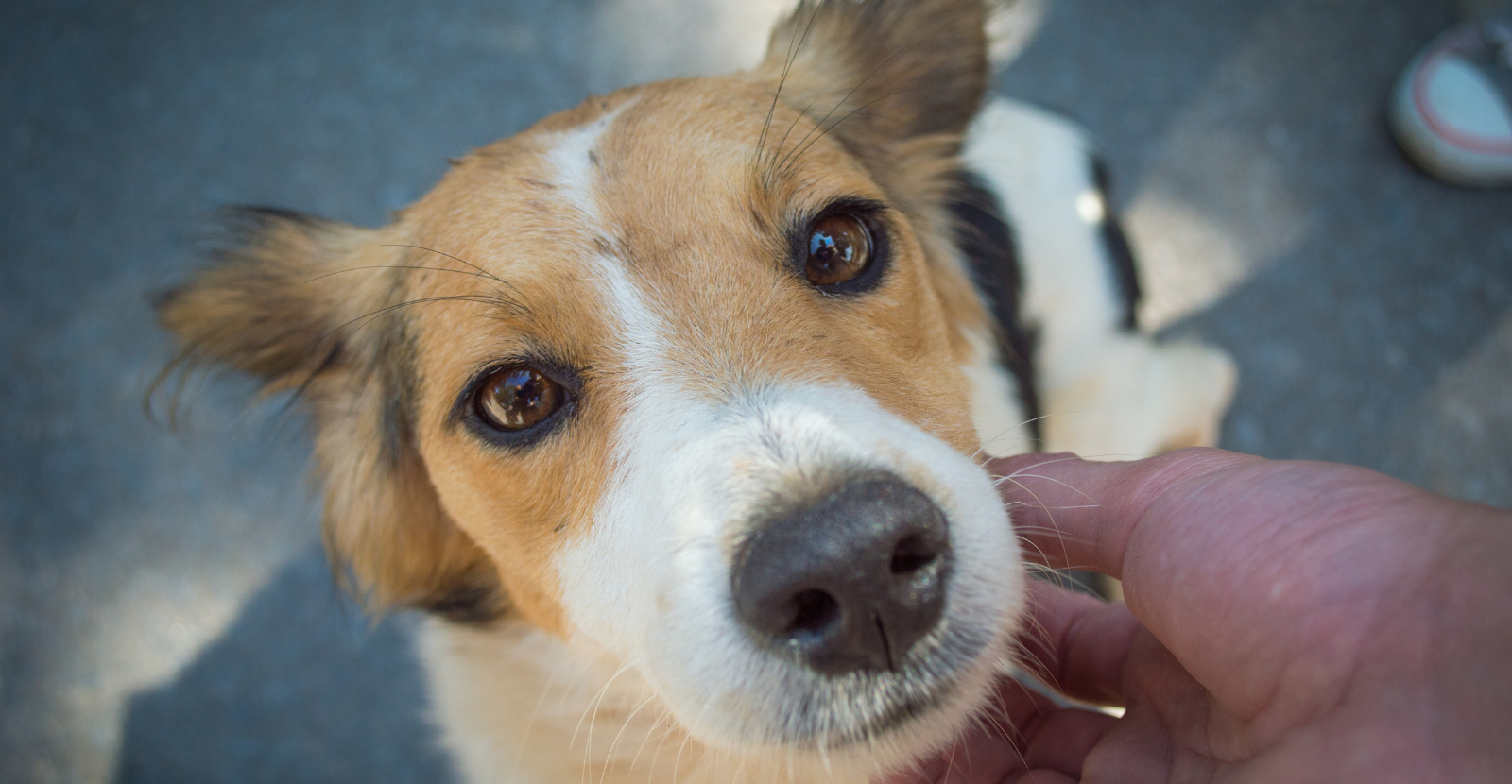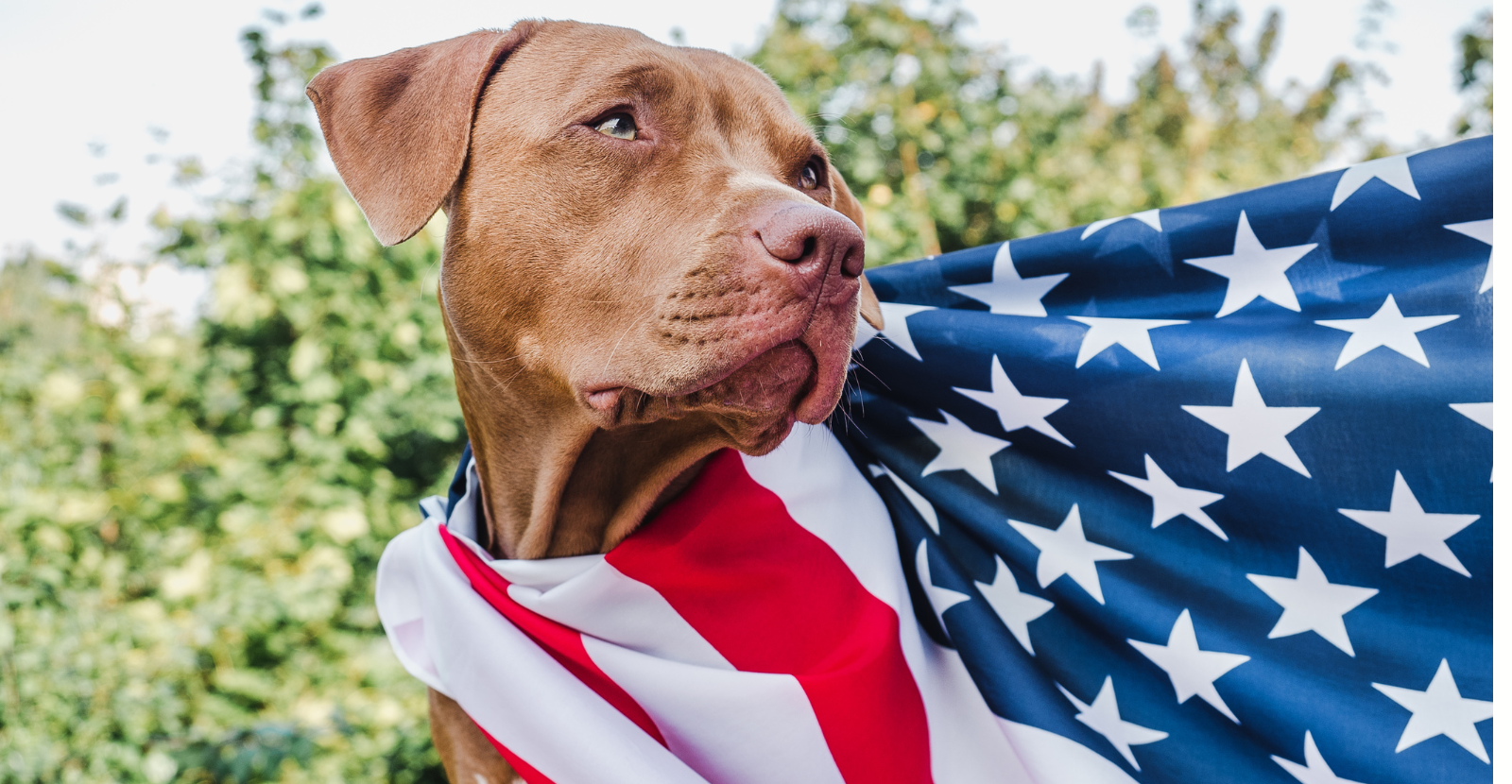March is focused on keeping people and pets safe from harm with several efforts to shine the spotlight on toxins and poisons in our home. The month of March has several efforts dedicated to this effort: it is recognized as National Poison Awareness Month, National Animal Poison Prevention Week and National Poison Prevention Week. These efforts give those of us in animal health the opportunity to raise awareness about the potential dangers that can harm our pets.
While there are many things that are fine for humans, some things are toxic to dogs or pose a serious risk to their health. As pet owners, it's important to know which foods should be kept away from our furry friends to prevent them from getting sick or worse. Many food items are dangerous or even deadly for dogs, most of us are familiar with, such as chocolate. Are you familiar with other potentially harmful foods for dogs, such as grapes, onions, garlic, and avocados? Knowing what your dog should not eat is an essential part of keeping them healthy and happy.
The more you know, the better you will be prepared. Also for your convenience, access a FREE DOWNLOADABLE in this post that is a resource you can share with the family about the Foods Poisonous to Dogs!
Click to Get Your FREE DOWNLOADABLE "TOP FOODS DOGS CAN'T EAT" CHART NOW!
If you have a dog, it is important to know what foods your dog shouldn’t have. The items highlighted in this information and on the downloadable are the most common foods that cause vomiting, diarrhea and even death in some dogs. Remember, every dog is different and just like in people, some may affect them more adversely. The more you know about how it impacts other dogs, the better you will be prepared.
The food and items on this list were revealed by the American Society for the Prevention of Cruelty to Animals® (ASPCA) as what they received the most calls about. While many are food items, there are also other poisonous items in your home such as vitamins, medicine, alcohol and cleaners. Surprisingly, 1/5 of the calls received to the ASPCA's poison hotline were not about their pet getting a food item they shouldn't have, but rather their pet getting into their over-the-counter medications. We have tips to keep your dog safe at the end of our poisonous foods list so be sure to make it to the end!
Top 10 poisonous things for dogs
- Over-the-counter medications: 19.7%
Over-the-counter (OTC) medications were the most common group of toxicants pets ingested. The most common dogs get into are: Acetaminophen like Tylenol and Vitamin D. They include vitamins, pain medications such as acetaminophen, ibuprofen, and naproxen, herbal supplements, antihistamines and cold and flu medications. - Human prescriptions: 17.2%
Medications prescribed for people are a dangerous combination for our fur-babies. We may take something and leave it at our bedside, or on the counter. Pay careful attention to where you keep your medications. Remember to keep all medications out of reach of pets. - Human Food: 12.1%
We have separated specific dangerous food in this list. This is just the all-encompassing category of food which includes the most common foods our dogs might get into Xylitol, grapes, raisins, onions, and garlic. - Chocolate: 10.7%
Chocolate gets its own category for the ASPCA. This is because chocolate tastes good, even to dogs. If they get access to it, they will most likely eat as much as they can. Also, chocolate is popular around every holiday and often left out for our dogs to devour when we are not looking. The ASPCA said they have almost 60 calls a day related to chocolate toxicity. - Plants: 9.3%
It is no surprise, but a variety of plants are toxic to dogs (and cats). Most are familiar with the more common plant threats: azaleas, holly, poinsettias and tulips to name a few. Surprisingly, the Sago Palm is climbing in the deadly chart. Sago Palms are usually found in outdoor landscaping, but there are a few smaller ones for indoors. Over the last 10 years, the ASPCA reported more than 1,400 dogs poisoned by Sago Palms. Thirty-four of those dogs died. In the state of South Carolina, Sago Palms are the #1 reason to call the ASPCA Poison Hotline. Cats also fall victim to eating toxic indoor plants. - Household items: 9.1%
This is a wide variety of items from laundry soap pods to paint and items leftover from home improvement projects. Remember if your dog sees you with these items, they are naturally curious and want to try it out. Be sure to keep them away from you while you are working on your project, and put things away when you are finished. - Veterinary products: 7.7%
Same as human medications, these medicines are for our pets. But they have a certain amount that should be taken. Your dog probably knows the flea and tick medicine is for them, so why not eat the whole package if it's left out? This could be very dangerous. Remember to put your dog's medications away just as you would your own. - Rodenticide: 6.8%
The goal of mouse traps and the poison for these critters is to look and taste good and be poisonous. This is why dogs see no problem getting into it. Even small amounts of rodenticide are concerning to your dog. Seek help immediately if you suspect they got into rodenticide. - Insecticide: 5.1%
Obviously dangerous, these poisons are found in garages, homes, farms, and other places your dog may frequent. - Garden products: 2.4%
The most common point of contention is fertilizer, herbicides, and soil enhancements.
The ASPCA Animal Poison Control Center (APCC) is a resource to help determine animal poison-related emergencies, 24 hours a day, 365 days a year. If you suspect your pet (any pet) may have ingested a potentially poisonous substance, call (888) 426-4435. Please note, you may be charged for this service.
Top 10 poisonous Foods for dogs in 2022
On the overall list of most poisonous things, the list of foods is what we worry about most. Most of us know about Chocolate. We have never moved faster than when chocolate drops on the ground and the dog goes for it. Because so many calls are about Chocolate, it is its own category to the Animal Poison Hotline.
Every year, they review thousands of calls to their Poison Hotline the previous year and categorize them. Here are the top offenders of food poisoning in our pets:
- Chocolate
- Grapes and raisins
- Xylitol
- Ibuprofen
- Bromethalin rodenticides
- Marijuana
- Anticoagulant rodenticides
- Vitamin D3
- Onions/chives/leeks/shallots
- Carprofen (Veterinary medication must be taken as prescribed; dogs will eat the whole package if left out.)
Bottom line: keep these things out of reach of your fur-baby!
Why are Some foods Poisonous for Dogs?
Chocolate is still a big deal in the poisonous food chart for dogs. One thing to remember: the darker the chocolate, the bigger the problem. It also depends on the quantity and quality of the chocolate. If your dog eats a stray M&M or two that fell on the floor, it will most likely be just fine. But if they got into a dark chocolate bar or cocoa powder, they may be in trouble. Dogs can’t metabolize the theobromine and caffeine found in chocolate. It can cause vomiting, diarrhea, and even death Read more about chocolate toxicity here.
Xylitol is extremely toxic to dogs and quickly is becoming more deadly than chocolate because it is in so many different things. Xylitol is an artificial sweetener found in sugar-free gum, candy, toothpaste, and some diet foods. Early symptoms of exposure will include vomiting and lethargy issues. Your dog may even have seizures. This exposure often comes with holidays. Think of the Gingerbread House left decorated on the table, or the package of gum left out in the Easter egg hunt. Be especially cognizant of these things to keep them away from your dog.
Grapes and raisins are known to cause vomiting in many dogs. The problem with raisins is they are dehydrated grapes and will expand in your dog’s stomach. This can cause serious problems where they cannot pass them if they’ve had too many, causing serious intestinal issues.
Onions and garlic in any form: powdered, raw, cooked or dehydrated, can adversely affect your dog. These things kill red blood cells in your dog and can lead to anemia.
Protein Bars. A surprise to the list this year means the increase of these being in more homes than ever before. What makes them dangerous is the combination of several things harmful to your dog. This includes chocolate, Xylitol used in the artificial sweetener of the protein bar, and even raisins found in different varieties. If they get into a box and devour the whole thing, you need to contact your veterinarian to discuss the situation.
Avocados have persin in them, which is fine for most people, although some people are highly allergic to it. Dogs are similar: they may or may not be allergic to persin. Persin is primarily in the skin and seed of the avocado. Another drawback to avocados is the large seed. If your dog gets it in their mouths, it can become stuck in its throat, intestines, or stomach, which could be fatal.
Coffee and Teas are on the list because of the caffeine. Alcohol is because of obvious reasons, it will affect your dog the same way it will affect a human. If you expect your dog had got into coffee grinds or drank alcohol, they need immediate assistance as it is highly toxic for most dogs.
Peaches, Plums and Apples. The surprise here is from the pits of these fruits. Peach and plum pits have cyanide, which is poisonous to both people and dogs. People know they shouldn’t eat the pits and seeds here, but our dogs do not.
Raw things: meat, fish, eggs. The problem with most raw things is there are bacteria that can cause food poisoning in most dogs. Signs of raw food poisoning include vomiting and high temperatures. Always cook food before giving it to your dog.
Yeast Dough. Similar to raisins, yeast will expand as it rises in your dog’s stomach. As it swells inside, it could cause a lot of pain. When yeast ferments to make the dough rise, it makes alcohol, which can lead to alcohol poisoning.
4 Tips to Prevent Dog Poisoning
Most of us know to prevent bad things from happening, a little planning needs to happen first. It's fundamental blocking and tackling theory. Here are some tips you can use to prevent your dog from getting accidentally poisoned.
- Keep any or all these items in higher cabinets so your pets do not get them. This means getting into the habit of always putting these things away when you get them out. Often pets get into things because someone forgot to put them in their proper place and left them out.
- Educate your family or anyone who cares for your pet about what is poisonous to your dog. The more they know, the better they will be at keeping hazardous things out of reach from your pet.
- Teach your dog the "Leave it" command to prevent accidents from happening. Your dog should know when you say "Leave it" they are to leave the harmful thing alone. Their reward is they will get a treat they will love and is much better for them! The problem some have teaching this command, is it is used for anything. If you have dropped their treat and you didn't want them to have it just yet, use a different term like "Wait." The "Leave it!" command should mean your dog will NEVER eat it, not that they get to eat it later. Similarly, your dog should also know to "Drop it" when they have something in their mouths they should not have. These commands just might save your dog's life.
- Be prepared for a Pet Emergency. Recently, we wrote about how to be prepared for a pet emergency. If you haven’t read it, take the time to go through it. Part of preventing poisonings is being ready if something should happen. This post also includes a FREE downloadable Pet Emergency Info Sheet you can fill out and have handy in case something should happen.
When to Call for Help
Most people think the first thing you should do is make your dog vomit. This is NOT TRUE! If you are concerned, the first thing you should do is contact your veterinarian. Time is always of the essence when it comes to food and toxic poisonings of pets. Another resource to keep in mind is the ASPCA Animal Poison Control Center (APCC) hotline.
They will answer any animal poison-related emergency, 24 hours a day, 365 days a year.
If you think your pet may have ingested a potentially poisonous substance, call (888) 426-4435.
Please note: they do charge for this service.
Now that you know everything there is to know, don't forget to download your free Top Foods Poisonous for Dogs Chart. We are pleased to help educate those on the Foods Your Dog Can't Eat Chart and answer many of your questions on the Most Toxic Food for Dogs.
Click to Get Your FREE Dowloadable "Top Food Dogs can't eat" CHART Now!







